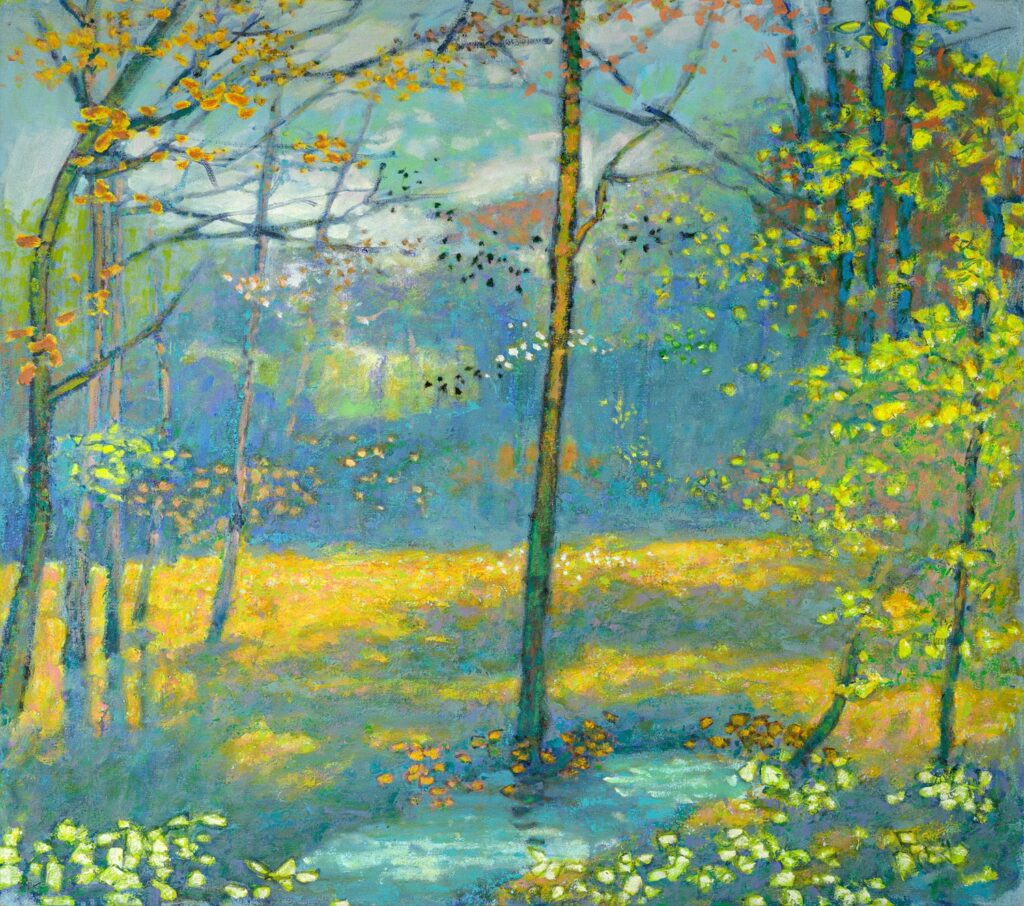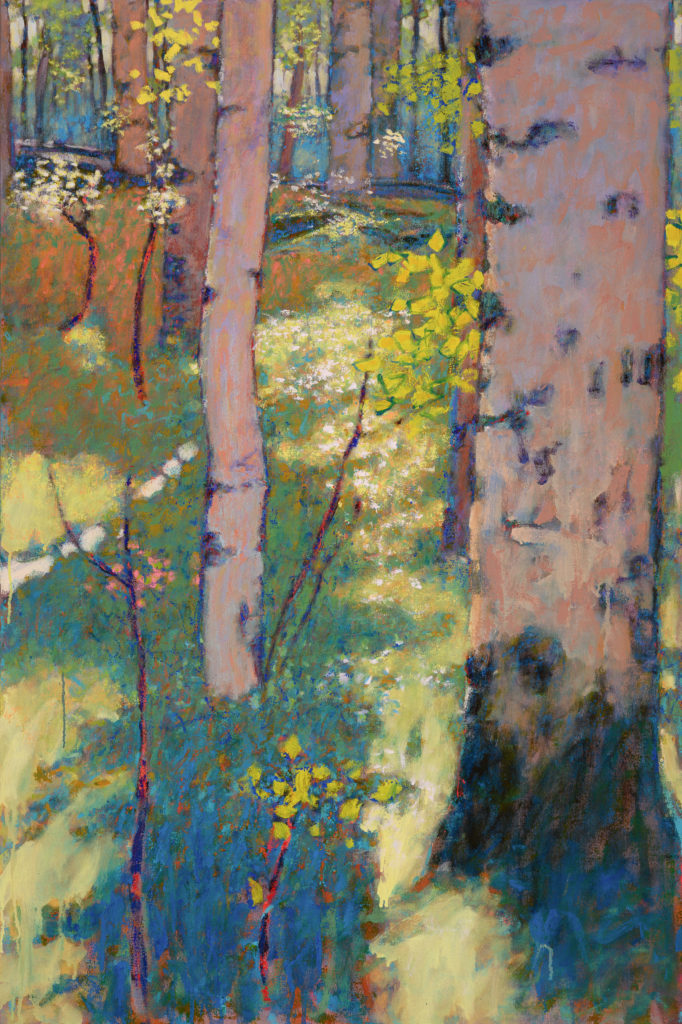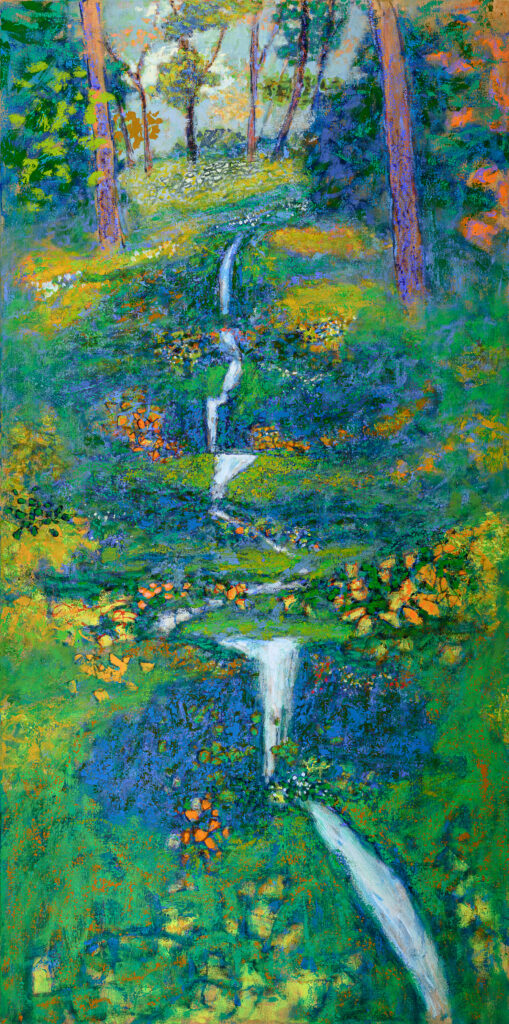Join us in the Santa Fe studio of Rick Stevens as we discuss impasto, landscapes, dots, getting lost, and the energy behind the brush.
“Sometimes it’s good to get a little lost, so I’m forcing myself to do something where I don’t know where it’s going. I want to have enough mastery to know how to do something successfully, but I don’t want a formula. I don’t want it to become formulaic.

“There are certain rules that I might have. Here I might have a spacial relationship, where here it might become much more ambiguous. I might play with that ambiguity here, just in how I use the more impasto, even in the background, so it sort of flattens things and yet, at the same time, reads like it goes way back and way forward. And at the same time, it can be flat. But I’m very aware of how it reads as a landscape – the spacial relationship.

“In the forest, things can be right in your face or way back there, which I kind of like to play. That has influenced how I abstract things, too, or how my abstract direction has gone. One reason why I like the dots is that it’s sort of a shape, but it’s a shape that things move within and through.
“I don’t like anything that totally stops the eye or contains itself, so things move from one thing to the next to the next. The pattern of the leaves might get continued through the dot pattern of the trees and then there’s a give and take, a flow, within the composition and spacial recognition. It even matters in how you apply it, just the energy you have with a brush or a palette knife.”
